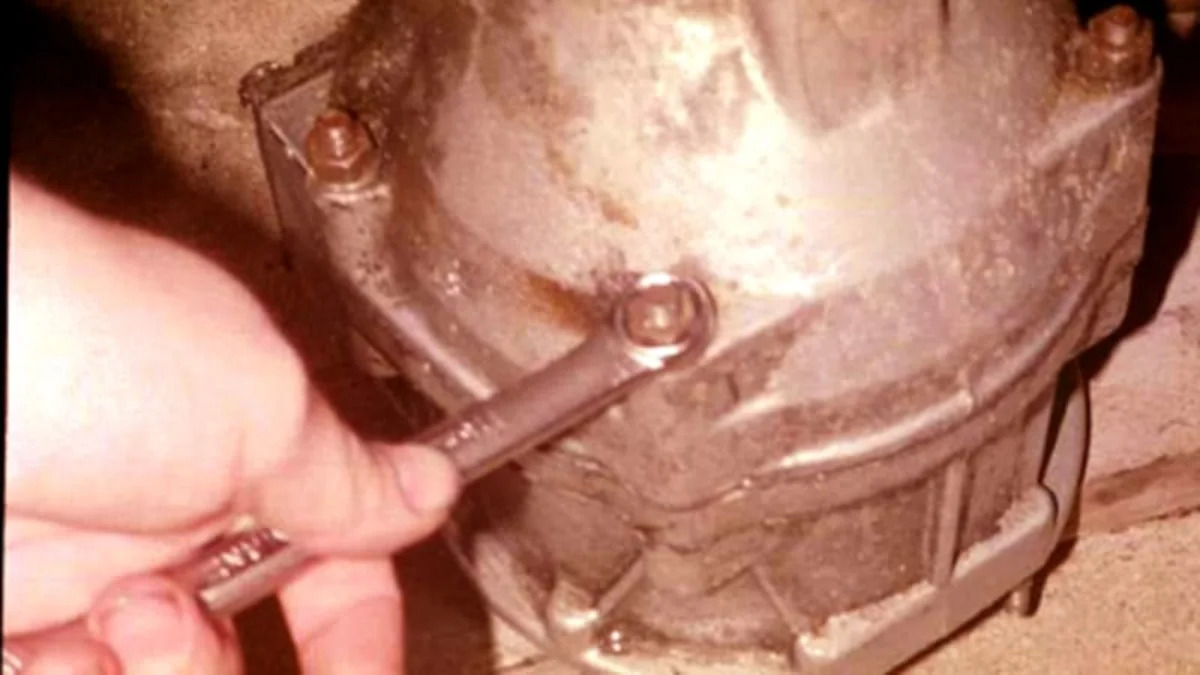With it getting colder here in New England, us Yankee Autobloggers have to prepare for winter. This often entails a final running of the yard equipment, just today I mulched the rest of the leaves that'd fallen on the back yard. There's nothing quite like the roar of an air-cooled "one-lunger" ringing out through the crisp air. The smell of exhaust brings back memories of long ago, when that same toxic unburned hydrocarbon parfum emanated forth from the tailpipe of passing Delmont 88s and Bobcats, among others. There's something about the way the scent of decay from the leaves mixes with the exhaust and combines with the air's coolness that just brings to mind those stylized pictures of happy family life in the horn-rimmed 1950s – earflap hats, red plaid jackets and all.
More after the jump.
Putting the small-engined beasts up for winter rest is one thing, but the flip side is the cold-weather workhorses have to be ready to go when the flakes stick. It was after a particularly nasty December day last year that claimed the life of a rather expensive transmission that a 1972 Ariens 724 arrived at the Massachusetts Autoblog HQ. This year, it's received some TLC before being asked to perform. After spending some time going through it and getting it ready for winter, the hankering for a fun old car like a '52 Ford Business Coupe with a Flathead is really strong. It's got all the good old stuff that we forget about now.
Tuning a car used to be an organic process where you'd have to balance a bunch of adjustments against each other just right to find the sweet spot. The snowblower would deliver you a nasty tickle if you reached too close to the spark plug lead with all that blowing snow in the air, so replacing the magneto was necessary. Magnetos are cool – they deliver you a spark at the plug without an external battery or coil. Engines with magnetos will just pop along forever. To get at the magneto, the flywheel needed to come off. Hiding under there was a set of ignition points and a condenser. "Oh yeah! Points!" Now, back in the day, nobody got excited about points, they were troublesome, they required regular filing and adjusting as the gap would change and alter your ignition timing. Still, when it's not your daily driver, it's so cool to be able to set the gap with a folded-over matchbook cover and clean them up with a flexstone, just like my grandfather did.
Any old engine that's sat a while, like that Flathead in our imaginary Business Coupe (until we find it in some barn), is going to suffer from some carburetor malady. Carburetor. It's a fuel-metering thingy, working on the venturi principle. Again, no battery needed -- as long as the engine's spinning, the carb will meter fuel. The one I was dealing with had a shot float bowl gasket, sucking in air, and a nasty cocktail of water, old gas and rust in the fuel lines. Replacing the needles and seats in the carb is like fine surgery. You need to pull it all apart carefully (watch those springs and pins and whatnot!), clean out the passages and then reassemble and adjust on the bench to a baseline. You may likely find yourself cutting gaskets like I did. Cutting your own gaskets makes you feel like some sort of old-world craftsman, tracing the old one and then cutting and punching the holes, almost like a cobbler.
Bolting it all back together and firing the beast up off a can of ether until the idle jet is close enough so it won't stall is exciting, you get to hear the old girl clear her throat. Now the fun begins. Slow, methodical half and quarter-turns with the screwdriver while listening for subtle changes in the engine note bring you close to being one with the spinning bits inside the crankcase. All the while, your mind is attuned to what the engine's feeling, "a little more, a little more, whoops too lean, quick back a quarter or it'll stall." Once the idle is smooth and even like an old Singer sewing machine, crack that throttle, boy!
ROAAAAR! Ah the sonorous growl of tuning the high-speed jets. Same lean vs. rich dance here, and then you have to try part throttle and see if it's correct and make compensations so that she'll return to idle with an abrupt throttle closure. Stalls are bad. And the smell! You will STINK when you're done, but the heady aroma of a just-slightly-rich mixture (facilitating good winter running) is addictive. Someone needs to make a cologne and call it "Header Smoke" or something. After you've got the induction and ignition worked out, you need to move on to checking and adjusting valve lash. Then you'd best grease all the zerk fittings you can find, balljoints, universal joints, etc. The checklist on an older, more "user-serviceable" car is far longer than what we need to do on the "sealed for life" vehicles of the modern era. There's a high level of man-machine bonding that goes on with older vehicles or just powered implements like the snowblower. You can't get that rush from bolting on a chrome intake snorkel.
The week of unseasonable mid-60s has given way to appropriate December weather here in the snow belt, and I can't wait to hear the steady Brrrrrrrrr of my Ariens' Tecumseh powerplant as cold flakes sting my cheeks, the plows rumble by and fill my driveway apron with mashed-potato looking snow and the air fills with the exhaust of a little motor beating in time with my own heart.


Sign in to post
Please sign in to leave a comment.
Continue